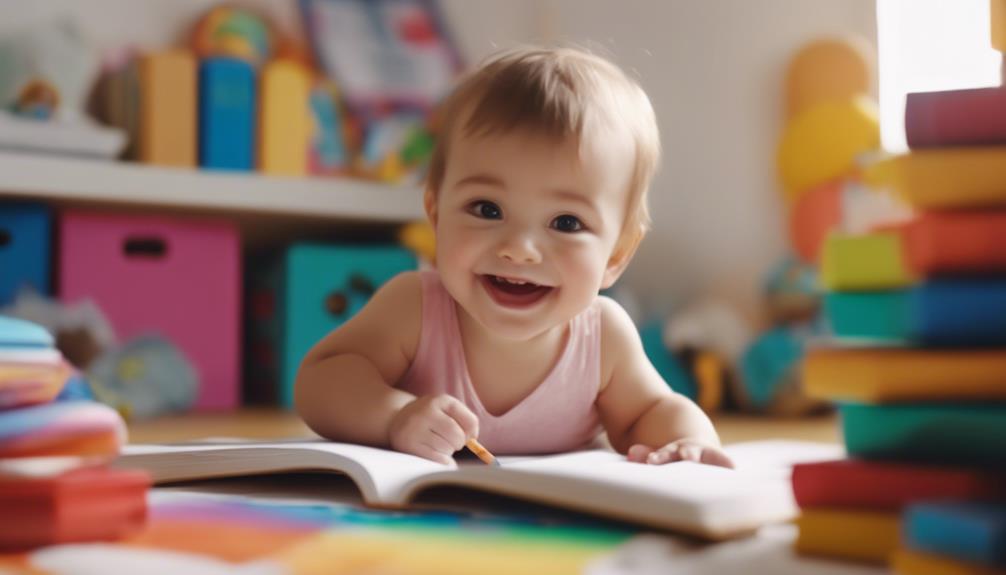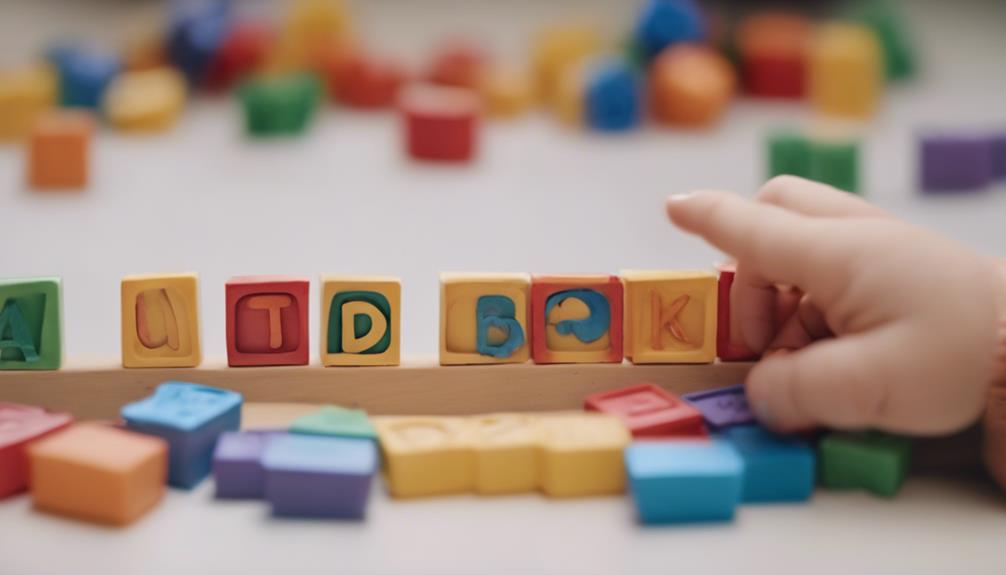Explore the top toys for baby brain development to enhance your child’s cognitive growth. Sensory stimulation choices such as textured teethers and musical mobiles can engage their senses. Help improve gross motor skills with toys that promote muscle strength and coordination. Boost cognitive development with puzzles and stacking toys. Encourage social skills with peek-a-boo toys and high-contrast images. Nurture problem-solving skills with shape sorters and puzzle playsets. Each category provides a variety of options to assist your baby’s early learning journey comprehensively. Discover more details on our top recommendations.
Key Takeaways
- Developmental toys promote cognitive growth and problem-solving skills.
- Interactive toys enhance cognitive engagement and sensory stimulation.
- Musical mobiles aid in auditory development and social interaction.
- Toys with vibrant colors and varied textures boost cognitive development.
- Shape sorters and stacking toys enhance problem-solving and fine motor skills.
Best Toys for Sensory Stimulation
For essential sensory stimulation in infants, consider incorporating textured teethers and soft squeeze toys into their playtime routine. These toys not only provide tactile input but also help infants develop their grasping and manipulation skills.
Additionally, musical mobiles can stimulate an infant's hearing, encouraging them to make sounds and engage with their environment. Toys with mirrors can improve focus on faces and objects, supporting social and language development.
Tripod gyms with dangling toys enhance reach and grasp abilities, promoting midline head and hand movements vital for motor skill development. Books featuring high-contrast images of baby faces and animals aid in speech, language, social, and cognitive development in infants.
Top Picks for Gross Motor Skills
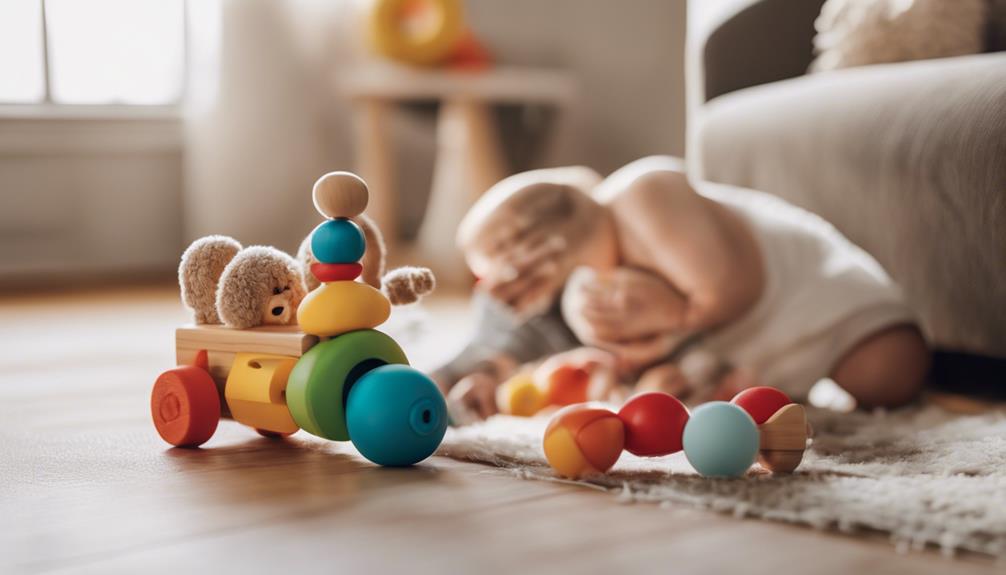
To enhance your infant's gross motor skills, consider incorporating developmental toys that promote activities like crawling, walking, and rolling. These toys play an important role in supporting muscle strength, coordination, and balance in babies. By engaging in movement-oriented play, infants can develop essential motor skills necessary for their growth and development.
Gross motor skills toys often target large muscle groups, providing babies with opportunities to practice and refine their physical abilities.
When selecting toys for gross motor skills development, it's essential to choose age-appropriate options that align with your baby's current abilities. By introducing toys that cater to your infant's stage of development, you can encourage gradual progress in their motor skills.
These toys offer various activities that challenge different aspects of gross motor skills, helping babies improve their coordination and overall physical capabilities. Investing in age-appropriate developmental toys can facilitate the natural progression of gross motor skill development in infants.
Recommended Toys for Cognitive Development

Enhance your infant's cognitive development with engaging toys that stimulate thinking, learning, and problem-solving skills. Toys designed for cognitive development play an essential role in helping babies expand their spatial awareness and fine motor skills.
Puzzles, shape sorters, and stacking toys are excellent choices as they encourage babies to explore shapes, sizes, and how objects fit together. Interactive toys that showcase cause-and-effect relationships can introduce babies to fundamental concepts of physics and logic, fostering early cognitive growth.
Additionally, toys with vibrant colors, varied textures, and different sounds provide sensory stimulation, aiding in cognitive development. By engaging with toys that require problem-solving and decision-making, babies can strengthen their critical thinking abilities from an early age.
Consider incorporating these interactive toys into your baby's playtime to support their cognitive development and lay a strong foundation for future learning and problem-solving skills.
Essential Toys for Social Skills
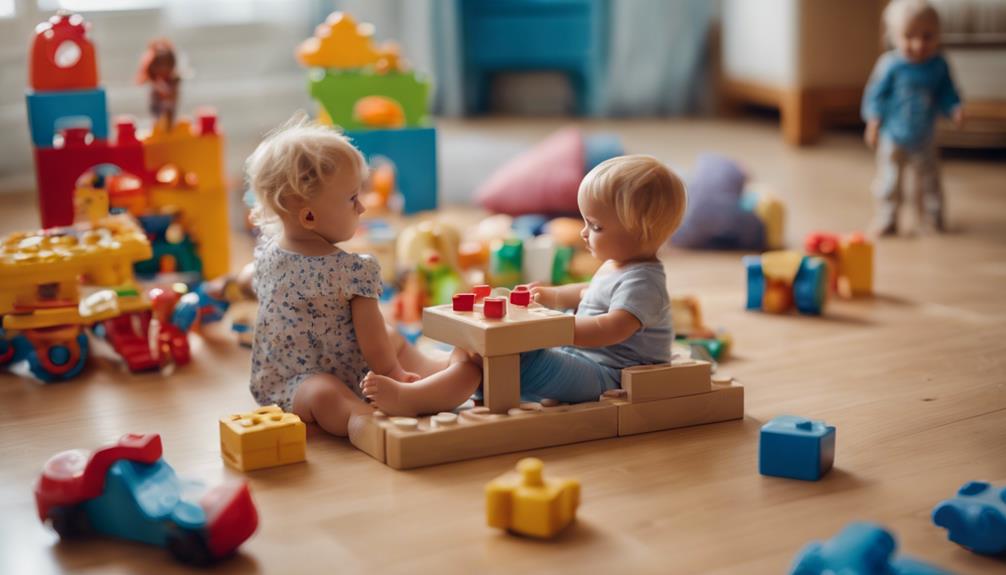
Encourage social interaction and communication skills in infants with toys designed to promote engagement with others. Peek-a-boo toys are excellent for fostering social skills as they encourage turn-taking and interaction.
Musical mobiles not only stimulate hearing but also prompt infants to make sounds in response, aiding in social engagement.
High-contrast images in books featuring faces and animals play an essential role in speech and language development, thereby nurturing social and cognitive skills.
Tripod gyms with dangling toys can enhance reach and grasp abilities, keeping infants engaged and promoting social interactions through play.
Mirrors strategically placed at a distance of 8-12 inches help infants focus on faces and objects, stimulating social and language development.
These toys not only offer entertainment but also support the vital early stages of social skill development in infants, laying a strong foundation for future interactions and communication abilities.
Top Choices for Problem-Solving Skills
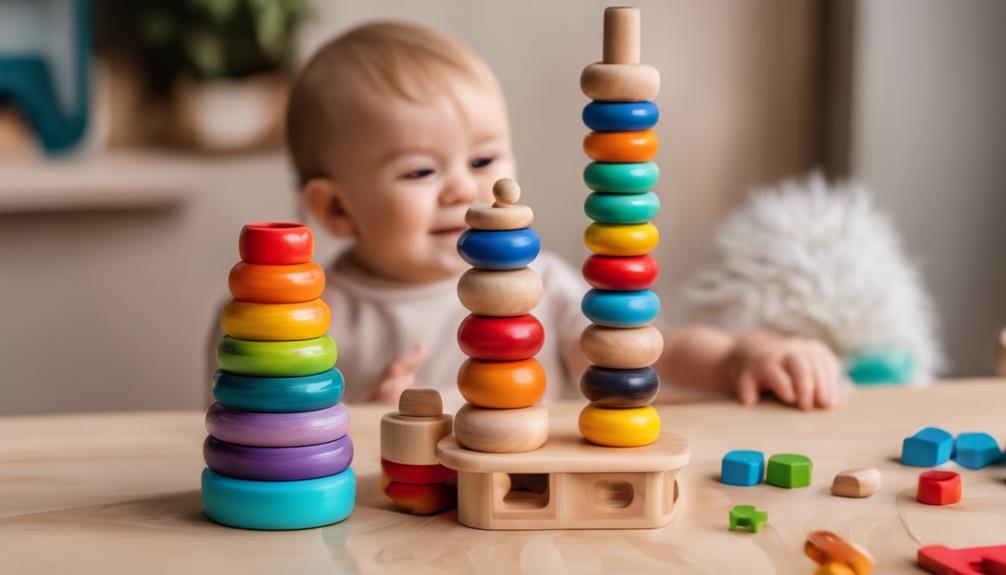
Problem-solving skills in infants can be nurtured through engaging toys that challenge them to think creatively and find solutions to simple puzzles. Toys that promote problem-solving skills not only aid in cognitive development but also enhance spatial awareness, hand-eye coordination, and understanding of cause and effect relationships. These activities stimulate brain development by encouraging infants to think critically and find solutions independently. By engaging with problem-solving toys like shape sorters and stacking blocks, babies can develop their creative thinking abilities, laying a strong foundation for future learning and cognitive development.
Below are some top choices for problem-solving toys that can help enhance your baby's cognitive skills:
| Toy | Features |
|---|---|
| Shape Sorter | Encourages recognition of shapes and problem-solving |
| Stacking Blocks | Promotes critical thinking and hand-eye coordination |
| Puzzle Playset | Enhances spatial awareness and cause-effect understanding |
| Busy Board | Stimulates creative thinking and fine motor skills |
Frequently Asked Questions
What Toys Are Good for Baby Brain Development?
Looking to enhance your baby's brain development with toys? Choose high-contrast books for 0-4 months, textured teethers for 4-6 months, rolling toys for 6-9 months, sensory balls for 9-12 months, and cubes/puzzles for 12-15 months. Boost their skills and learning!
What Toys Should a Pediatrician Recommend for Infants?
For infants, pediatricians recommend toys that stimulate senses, refine motor skills, boost cognition, and encourage social interaction. Rattles, mirrors, textured teethers for 0-6 months, then blocks, rolling toys, and interactive playthings for 6-12 months.
What Toys Do Doctors Recommend for Babies?
Doctors recommend toys that stimulate your baby's senses, encourage exploration, and promote fine and gross motor skills. Interactive toys like rattles, mirrors, and textured teethers are highly recommended for infant brain development.
What Kinds of Toys Do Babies Need When They Are 4 to 6 Months Old?
When babies are 4 to 6 months old, they need textured teethers for teething, soft squeeze toys for grasping, peek-a-boo toys for cognitive development, and interactive toys for sensory exploration. These toys help in their overall growth and development.
Conclusion
To sum up, selecting the right toys for your baby's brain development is essential for their growth and learning.
For example, Sarah, a first-time mother, noticed a significant improvement in her baby's problem-solving skills after introducing puzzles and shape sorters into their playtime routine.
By choosing toys that focus on sensory stimulation, gross motor skills, cognitive development, social skills, and problem-solving abilities, you can support your baby's overall development in a fun and engaging way.




